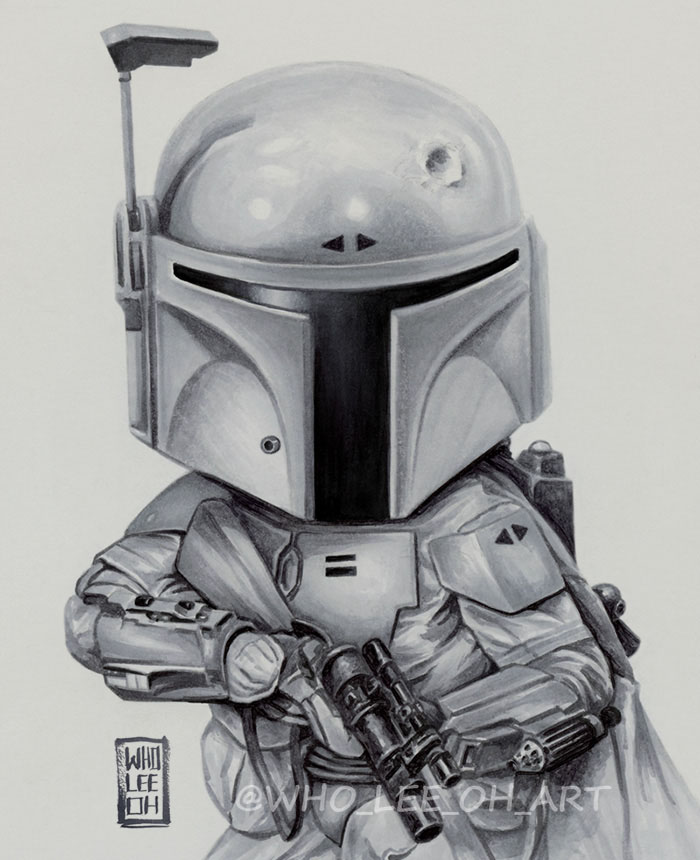
Featured Art: Prototype Fett Hybrid Painting
British author and speaker Sir Ken Robison is well known for delivering a TED Talk that explores the theory that schools kill creativity. With our current education system rooted in the industrial revolution, subjects like math and science sit at the top of the hierarchy while much less importance is placed on the arts. As such, countless would-be artists have likely been steered unintentionally away from their calling as kids, and funneled into career paths that society as a whole deems to be “practical” and “safe”.
Fortunately for the art world, Julio Del Hierro was not one of them. Having grown up under the common parental expectations of becoming a doctor or engineer, Julio like so many others initially found himself on the same standardized path prescribed to nearly everyone on the planet. Not only was he able to break free from the mold, in part thanks to an insightful art teacher, but his ability to make difficult decisions as well as subsequent years of hard work and experimentation led to him becoming a prominent surfacing/texture artist, complete with a highly decorated IMDb page.
Julio’s Instagram account is a great showcase of the varied skillset and styles that you would expect from a world-class artist. Star Wars fans will appreciate this great bleacher sketch of Chewbacca, as well as this insanely detailed pen drawing of Weeteef Cyubee that was done on the train. Julio also has plenty of offerings for fans of other genres, like this incredible hybrid painting of Cable getting photobombed by Deadpool, an eerily realistic realistic Predator, and this tribute portrait of George Michael. And just for good measure, he can sculpt, too.
Since the prototype version of Boba Fett has never made a canonical appearance in books or films, we are often intrigued whenever the character makes it into an artist’s body of work. Julio is certainly no exception, especially given his wide range of experience and interests that clearly spans well beyond just Star Wars. His interview provides an interesting story of how this came about, as well as a fascinating glimpse into his unconventional journey to the top of his field. Enjoy!
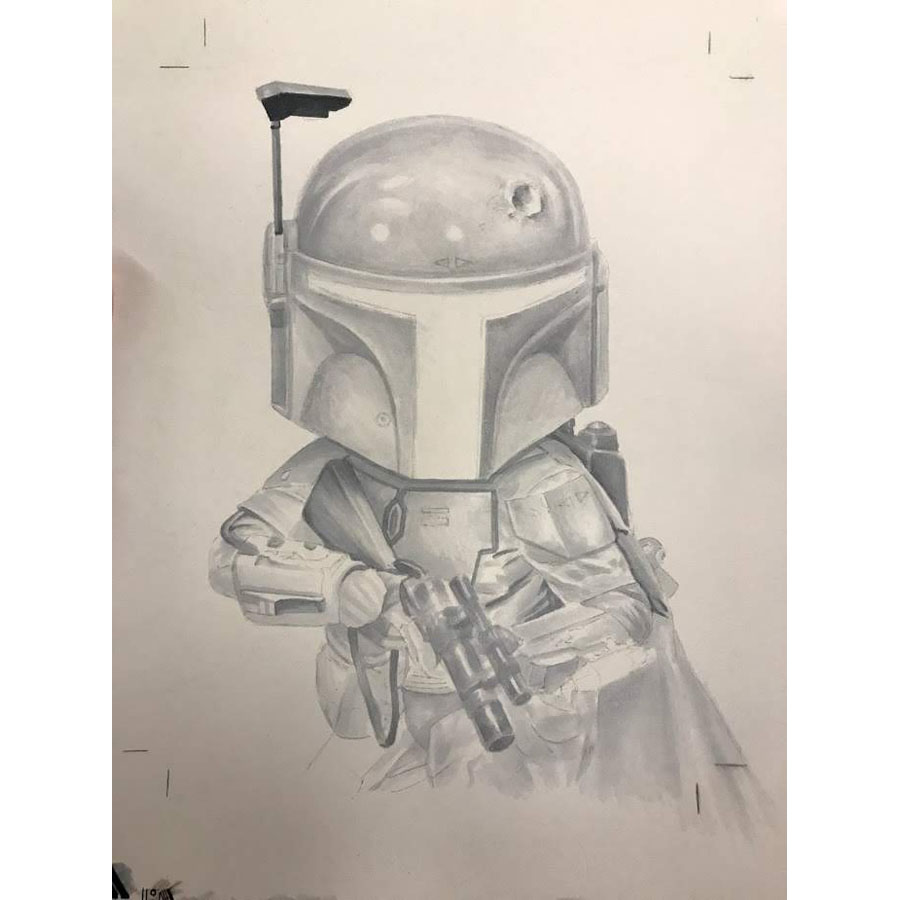
What are three interesting facts about you?
I took drama in high school as my “fun” elective. I ended up finally taking an art class near the end of high school after dropping out of a chemistry class which was way over my head. My high school art teachers told me that I should consider a career in art. Up to that point in my life I didn’t realize I could have a career as an artist.
I was terrified to tell my parents that I wanted to be an artist instead of a doctor or engineer. I knew that being an artist was what I was meant to be, so I prepared a presentation to explain why being an artist was actually a legitimate profession. My mother was supportive but my father was very upset at first. He eventually came around after he saw how happy I was, and started making money!
I married my high school sweetheart. The first time we spoke I was working on a painting after school. My future wife popped her head into the art class during a break in her cheerleading practice and chatted me up. My wife has been my biggest supporter from the start.
What are your earliest memories of Star Wars?
I remember my parents taking me to a multi Star Wars film event when I was a kid. It must have been when the Return of the Jedi was released. I don’t remember if it was all 3 films or just The Empire Strikes Back and Return of the Jedi but I remember it being in a large theater and there being a break between films.
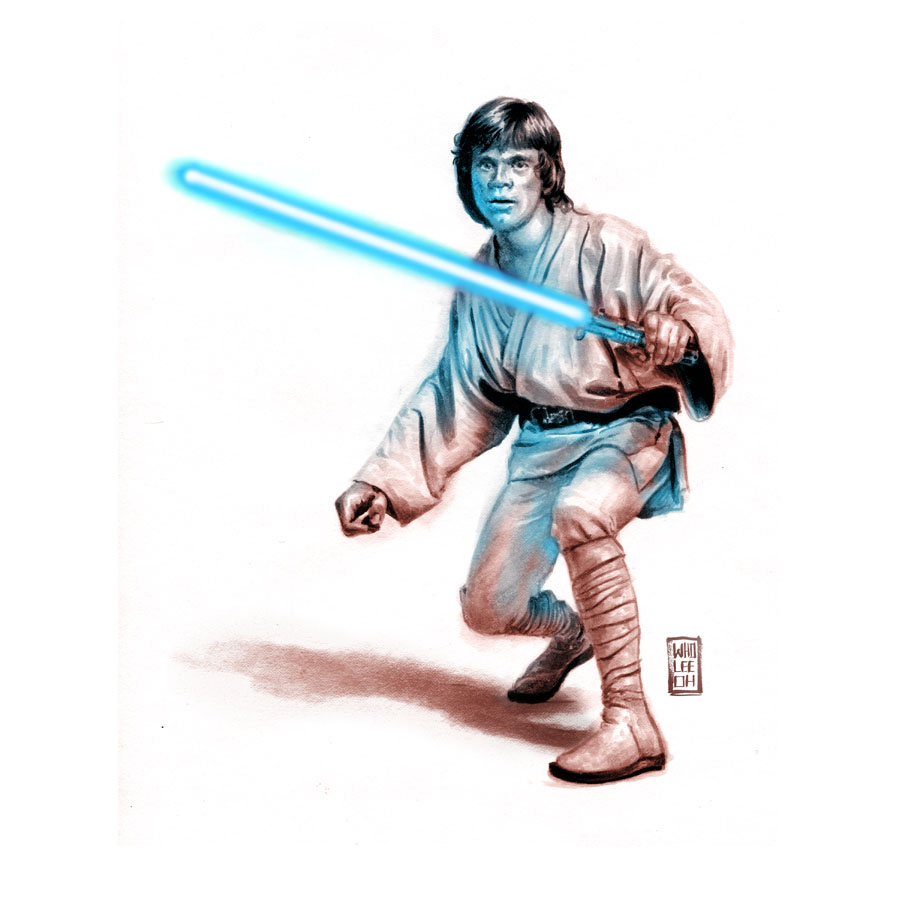
When did you first know you wanted work in the animation industry?
It took me a while to figure out which field of art I wanted to be in. I started in graphic design because that’s what my high school teachers said I should do. Then I switched to classical animation at Sheridan College because I had a few friends that were going there. I only took the first year of animation because I realized I didn’t enjoy animating but I loved the background painting class. Next I switched over to the illustration program at Sheridan and finally felt I had found where I was supposed to be. After the three year illustration program I took a one year new media web design post grad course to learn how to use a computer and then finally took the computer animation post grad. I felt like computers were going to be the art tools of the future after seeing Jurassic Park and I didn’t want to get left behind.
What artists and/or artwork have been the most inspiring to you?
I have loved art for as long as I can remember. I think my earliest art inspiration was probably Bob Ross. I’m so glad he has made a comeback recently. In high school I was really into comic books and my favorite artists were Jim Lee and Arthur Adams. Ray Harryhausen, who I learned about from the show Movie Magic, was a big inspiration and I am grateful that I had the opportunity to meet him at an appearance in Toronto years ago. Of course, being such a huge Star Wars fan, I have to include Ralph MaQuarrie. These days I am inspired by the hundreds of artists that I discover on a daily basis on instagram and artstation.
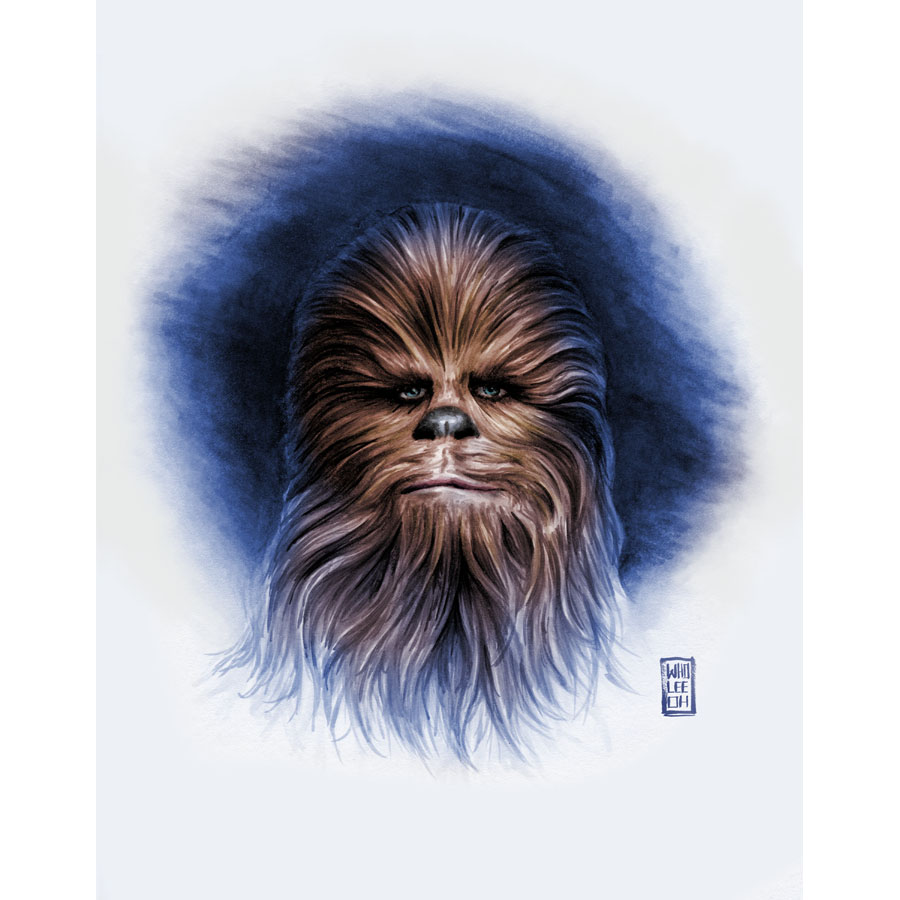
Can you tell us a little about your role as a senior surfacing artist at Jam Filled?
As a senior surfacing artist I usually get more characters or hero assets to work on but that depends on the skill level of the team. Juniors usually get mostly small props and slowly work their way up to more difficult and complicated assets. There are a lot of things to take into consideration when surfacing an asset that artists learn over the years. My experience allows me to be able tackle my tasks without bothering the team lead very much if at all.
What has been your favorite movie or project that you have worked on, and why?
My favorite movie project has definitely been Disney‘s The Wild when I worked at C.O.R.E Feature Animation. It was a special project because it was the first animated feature film made in Canada. I was lucky to be a part of this project early in my career. I learned so much from all the talented artists that came to Canada from all around the world to work on The Wild. I made many lifelong friends during this time.
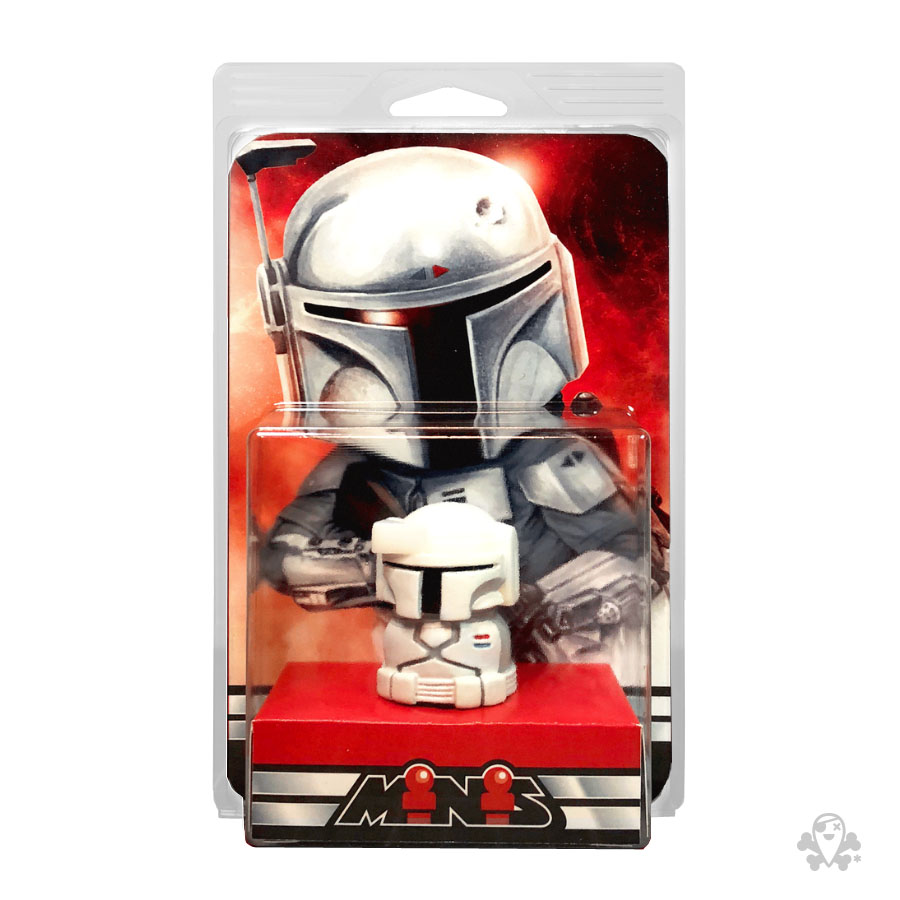
You recently contributed some brilliant art in a collaboration with artist Ryan Spencer on his exclusive MiniWars Prototype Fett figure. How did that come about?
My high school art teachers all recommended that I take a graphic design program in college. Ryan was one of my many talented classmates. It was a small class and we pretty much lived at school that year so we got to know each other very well. I only did the first year of the program because graphic design didn’t feel like a good fit but we got in touch years later thanks to social media. Ryan knew we shared a love of Star Wars and he liked my work so he reached out and asked if I wanted to work with him on the Prototype Fett Exclusive figure.
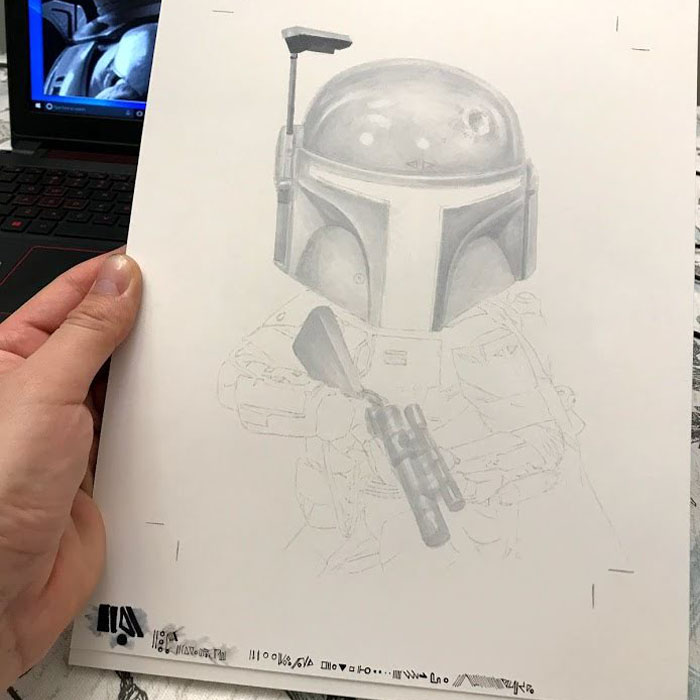
What can you share about the process of creating the painting itself?
I began by doing a Google search and collecting Boba Fett references. Ryan left what he wanted wide open so I was able to come up with the composition on my own. I decided to go with more Chibi style proportions to be more in line with the figure. I laid out the figure in the dimensions of the packaging using Photoshop so I could easily edit the shapes and sizes. Once I was happy with the design I printed it out and traced it on to a sheet of marker board to render using copic markers. I could have painted it faster digitally but I wanted to get away from the computer and I wanted the original to be something I could hold in my hands. After the marker rendering was completed I scanned it in to the computer and did minor tweaks and adjustments before sending it off to Ryan.
What advice do you have for aspiring surfacing artists?
Learn to draw. Learn to paint. Learn the basics and don’t expect the computer to do all the work for you. The computer is just a tool and you need to be a good artist first. Make sure to continue learning. There are always new programs popping up that make surfacing easier and more fun. The internet is full of free and paid tutorials so use that to get better so use them.
Last but not least, what is your dream goal or project as an artist?
At one point in time, my dream project would have been to work on a Star Wars film. If I had relocated to Vancouver like many of my friends did years ago, I probably could have made that dream a reality. My wife and I planted our roots here in Toronto though and I moved from feature film VFX to animated children’s shows to have a better work life balance. I am very happy with my decision because it gives me the time and flexibility I need to raise my 3 kids. My new goal or dream project is to create my own universe probably in comic book form. I hope to raise my presence on social media and maybe start an art Youtube channel.
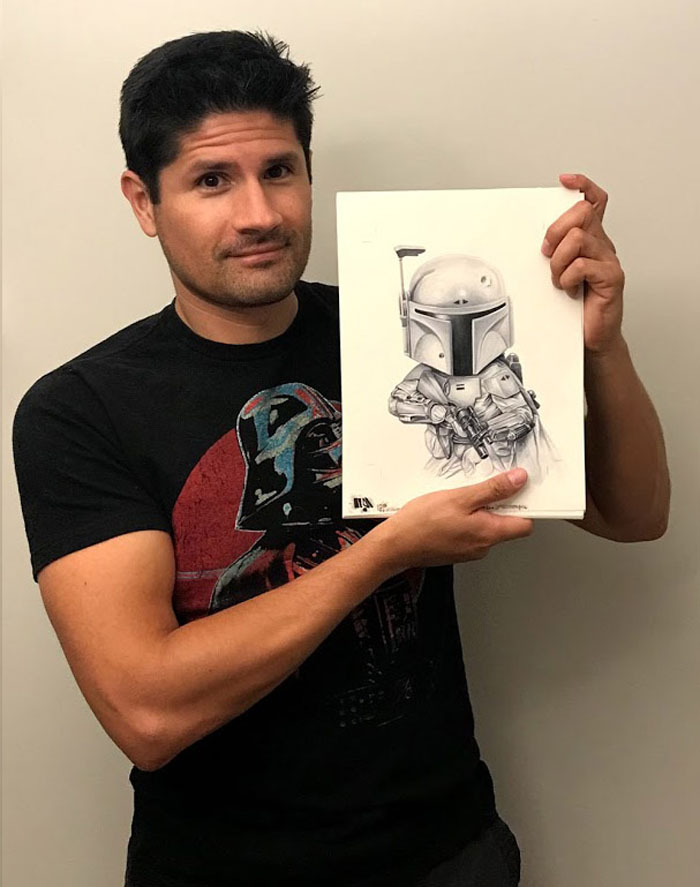
About Julio Del Hierro
Julio Del Hierro is a Surfacing/Texture artist in the film and television industy. Julio was born in Lima, Peru but has called Canada home since the age of five. He has worked on several films and television shows including The Incredible Hulk, Resident Evil: Afterlife, Thomas and Friends, and Elena of Avalor to name a few. You can follow Julio’s work on instagram or check out his full filmography on IMDb.